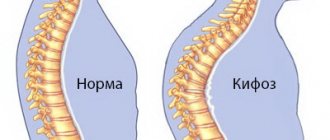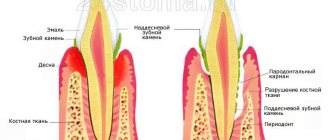General information
Phimosis is a condition characteristic of men in which it is impossible to expose the head of the penis. This condition can be either normal, that is physiological , or abnormal – pathological . Also, phimosis in boys is usually divided into congenital and acquired .
Most often, congenital phimosis is diagnosed in men. At birth in boys, physiological phimosis, that is, the inability to completely displace the foreskin and expose the head of the penis, occurs in 96% of cases. Only four percent of boys are born with a foreskin that is flexible to the point that the head of the penis opens completely. Gradually, the situation levels out, and by the age of six months, in twenty percent of boys, the head of the penis can be opened. At the age of three, phimosis disappears in 90% of cases, and by about the age of six, this condition goes away on its own in almost all children.
The situation is somewhat different with acquired phimosis or a situation where the foreskin has lost its elasticity due to illness and injury.
Treatment of phimosis
Conservative methods of treating phimosis
Sometimes experts suggest that patients stretch the prepuce for a long time with special instruments or using their fingers. Preputial stretching can be combined with corticosteroids.
Stretching the foreskin using a special Glanshy tool
One of the main methods of conservative treatment is stretching the foreskin. For these purposes, a special tool is used - Glanshy. This device was invented in Japan. Outwardly, it looks like tongs.
The two ends of the instrument are inserted into the skin fold of the foreskin, and then, using the handle, they are slowly pulled apart, expanding the skin. The device is effective even if the skin ring is too narrow. At the same time, the likelihood of pain is minimized.
However, this device is rarely used due to the likelihood of injury.
It is quite possible to stretch the foreskin manually: although it will take much more time to achieve a pronounced effect than when using Glansha, the risk of injury to the genital organ is reduced.
Manual foreskin stretching
The foreskin is manually stretched as follows:
- hands are treated with an alcohol-free antiseptic;
- the skin at the site of exposure is softened with a nourishing cream, for example, hypoallergenic baby cream. It is useful to steam the skin before the procedure by taking a warm bath;
- as soon as the cream is absorbed, they begin to very carefully, slowly pull the foreskin upward, trying to expose the head of the penis;
- At the first appearance of pain, you must stop performing this manipulation.
After the stretching procedure, the penis is treated with an antiseptic. For this purpose, such soft agents as Miramistin, Furacilin, Chlorhexidine are suitable. If there are wounds or microcracks, you can use an antiseptic ointment, for example, Solcoseryl.
Symptoms of phimosis
Phimosis in boys is expressed by the main symptom - the inability to expose and remove the head of the penis. In some cases, this condition does not cause complaints in boys, but quite often children with phimosis have problems with urination. So, during the process of urination, the boy may strain strongly and show noticeable anxiety. As a result, the child's urine enters the preputial cavity . It swells, and urine passes in drops or a thin stream through a narrow opening.
Sometimes phimosis is accompanied by an inflammatory process, the symptoms of which are pain in the area of the head of the penis and foreskin, and the appearance of purulent discharge from the opening of the foreskin. The patient's lymph nodes and the body temperature is rising. paraphimosis occurs , acute pain appears in the restrained head of the penis, the head of the penis becomes larger and turns distinctly blue. In this case, the patient needs to receive emergency care.
With phimosis, adult men sometimes have complaints about problems with potency , which arise as psychological discomfort due to pain during sexual intercourse.
Physiological phimosis
A boy's genital organs begin to form after 11-12 weeks of intrauterine development. The head of the penis and the foreskin are formed from a common rudiment in the third trimester of pregnancy, their separation occurs at the site of the coronal sulcus. The cells of the prepuce begin to actively divide, significantly outpacing the tissue of the penis in their growth. As a result, they surround the head in the form of a cup and close it with a cavity. The anatomical proximity and commonality of tissue lead to the formation of delicate epithelial septa between the inner layer of the foreskin and the skin of the glans.
Development of the penis during child growth. Up to ~10 years of age, fused glans and foreskin are the norm.
In a newborn child, the preputial cavity is completely delimited from the environment by similar cords, which prevents pathogenic microflora from entering it. By 3-4 months of life, the sebaceous glands of the foreskin begin to function. They produce smegma, which accumulates in small quantities in the preputial cavity. Its infection and development of the inflammatory process are prevented by epithelial septa in the area of the foreskin opening. Gradually, these thin strands are destroyed, the smegma moves to the exit and is released through the resulting free spaces. It can be seen as small white waxy flakes on the baby's underwear.
By the time of puberty, the septa are completely or partially reduced and the mobility of the foreskin increases. During masturbation or after the start of sexual activity, the head begins to be completely released, although the process may be painful at first. Thus, physiological phimosis resolves independently during puberty and does not require treatment.
Treatment in case of inflammation
Despite the naturalness of phimosis, in some cases there is a need for medical care. If the boy is insufficiently cared for or does not observe personal hygiene, pathogenic microflora enters the preputial sac from the skin and an inflammatory process develops. Clinically, this is manifested by redness along the edge of the preputial opening, local soreness and an unpleasant odor from the penis. Subsequent inflammation leads to the formation of cicatricial phimosis, which will require surgical treatment.
If such symptoms are detected in a child, parents should contact a pediatric urologist or pediatric andrologist. Previously, the technique of instantly opening the foreskin with a sharp jerking movement was widely practiced. This procedure is extremely painful for the boy and can cause psychological trauma. In addition, a single-stage opening damages the foreskin and can cause cicatricial phimosis in the future.
Today, doctors recommend gradual opening of the head by 1-2 mm. It is carried out after a warm bath, preferably with the addition of antiseptics: a weak solution of potassium permanganate, a decoction of chamomile, calendula, and sage. It should be taken 2 times a week for 10-15 minutes. After the water procedure, the foreskin is treated with a healing ointment (bepanten, solcoseryl) or baby cream to increase its elasticity and prevent rupture. The skin is moved back no more than 2 mm in one procedure. This method can be used to treat phimosis at home for several months.
If the method described above is ineffective, the surgeon or urologist cuts the resulting adhesions with a probe. He performs the procedure on an outpatient basis without pain relief or under local anesthesia. The doctor inserts a thin metal rod with a rounded end into the preputial sac and moves it around the circumference of the head of the penis. Subsequently, the boy’s penis should be washed daily using antiseptic solutions.
Video: phimosis - norm and pathology, Dr. Komarovsky
Causes of phimosis
Phimosis can occur as a result of trauma to the penis and subsequent formation of scar tissue. As a result, the foreskin narrows and the man develops cicatricial phimosis . The cause of acquired phimosis can also be an inflammatory process of the foreskin of the penis ( balanoposthitis ). As a result of this disease, scars also form, and the patient exhibits phimosis. Sometimes the cause of phimosis is a genetic predisposition to the occurrence of phimosis as a result of an insufficient amount of the elastic component of connective tissue in the human body
The main reasons for the development of pathology
We have already explained what phimosis is. Now it is necessary to determine the main causes of this pathological condition.
This disease is considered a consequence of inflammation. It is logical to assume that the main reason for its development is poor hygiene or the presence of smegmal stones.
The glands of the prepuce produce the so-called smegma, which accumulates in large quantities before the head opens. It needs to be soaked. Only after this can the smegma be washed off. It often happens that so-called stones are formed in it, which can grow together. In such a situation, surgical assistance is required.
Mothers take very good care of their children. That is why it is incorrect to say that the main reason for the development of pathology is hidden in improper care. It turns out that phimosis in a child can appear due to allergies. In young children, rashes on the mucous membranes of the genital organs and skin are not considered uncommon. Experts recommend that such patients avoid contact with chemicals and try not to eat allergenic foods.
In men, the disease also develops as a result of the inflammatory process. There are known cases of phimosis due to sexually transmitted diseases (syphilis, gonorrhea). Of particular importance is genetic predisposition. Scientists have proven that connective tissue deficiency can be inherited.
Classification of phimosis
Currently, it is customary to distinguish four degrees of phimosis. In the first degree, the head of the penis can only be opened at rest. If you try to expose the head of the penis during an erection, the person will feel pain, and it is also difficult to do.
In the second degree of the disease, it is difficult to remove the head at rest, and during an erection the head of the penis does not open at all. The third degree of the disease is characterized by the inability to open the head of the penis, or it only partially opens in a calm state. The fourth degree of phimosis is the most severe: in this case, the head of the penis does not open at all, which greatly complicates the process of urination. A person produces urine in drops or in a very thin stream.
, relative phimosis is also distinguished . In this condition, the narrowing of the foreskin becomes noticeable only during erection.
Phimosis of the first and second degrees is characterized by pain, which mainly manifests itself during the erection process when the foreskin is pulled on the head of the penis. With phimosis of the third and fourth degrees, as a rule, there is no pain, because the size of the preputial ring is insignificant and, therefore, there is no possibility of exposing the head of the penis.
In patients with phimosis, even with a relatively slight narrowing of the foreskin after the start of active sexual life, the condition can worsen and after some time lead to the fact that the head of the penis cannot open at all. The fact is that during sexual intercourse or masturbation the mucous membrane is injured and microtears are formed. Over time, small scars form at the site of such tears, which ultimately makes the tissue resistant to stretching, and phimosis intensifies.
What is phimosis?
This is a pathology in which there is an abnormal structure of the genital organ, expressed in excessive narrowing of the foreskin. The disease can be congenital or acquired.
The first option is the most common. Otherwise it is called physiological phimosis. The pathology usually goes away on its own by the age of three. The acquired variant develops as a result of previous inflammatory diseases of the urethra and mechanical damage to this area.
The presence of phimosis at any age entails the appearance of various complications, not only physiological, but also moral. The head, covered by the foreskin, is a hotbed of infectious processes due to constantly accumulating urine residues and secretions produced. In addition, in adults, the disease serves as a source of sexual disorders, starting with the appearance of pain during intimacy and ending with the inability to perform sexual intercourse.
Prevention of phimosis
To prevent phimosis, it is necessary to adhere to the rules of penile hygiene. In this case, it is important to remove the skin of the foreskin at least twice a day and wash the head of the penis with clean water. Hygiene is equally important for the prevention of phimosis in newborn boys. To prevent inflammation of the head of the penis, it is recommended to bathe the child in herbal infusions, using medicinal plants that have antibacterial and anti-inflammatory properties. A decoction of chamomile, calendula, and string is suitable for this purpose. As a folk remedy for adult men who have certain problems with retracting the foreskin, it is recommended to make local baths, immersing the penis in a decoction of herbs for twenty minutes and retracting the foreskin.
Why is phimosis dangerous?
The disease can lead to the following complications requiring specialized medical care:
- paraphimosis, the development of which can be triggered by masturbation. The essence of this complication is that the foreskin, which extends beyond the head, is pinched. This leads to the appearance of such unpleasant symptoms: swelling and cyanosis of the penis, severe pain, and in the absence of qualified help, the head may become purple or even black;
- balanoposthitis, in which redness, pain, itching of the head of the penis appears, as well as the appearance of purulent discharge;
- stagnation of urine provokes the development of urethritis, cystitis, pyelonephritis;
- the foreskin and the head of the penis grow together.
We recommend! Mycomax for thrush: reviews, price, how to take.
It is interesting that among some peoples, phimosis is not considered a problem at all, but is even a manifestation of beauty. Be that as it may, untreated phimosis can have serious consequences for men's health. Why can this be said?
Everything becomes clear if you delve a little deeper into physiology. The mucous membrane of the foreskin produces smegma - a substance that contains fats, bactericides, microorganisms, pheromones, etc. It is essentially a protective lubricant that protects against drying out. What happens with phimosis?
Smegma becomes a favorable environment for the active reproduction of pathogenic microorganisms. Stagnant processes ultimately provoke the appearance of inflammatory and infectious diseases. In addition, there is scientific evidence that suggests that stagnation of smegma leads to the appearance and accumulation of oncogenic substances. This can cause the development of cancer in the man himself and his partner.
Complications of phimosis
If a patient has severe phimosis, smegma , a fat-like secretion secreted by the glands of the foreskin, may stagnate. This liquid becomes a breeding ground in which various bacteria multiply. As a result, as a result of this situation, an inflammatory process develops. Even unexpressed phimosis is a prerequisite for the accumulation of smegma and, as a consequence, the manifestation of hygienic problems.
In patients with phimosis of the fourth degree, the foreskin narrows to the maximum, and obstacles appear to the normal outflow of urine. External manifestations of the narrowing include swelling of the foreskin and the penetration of urine drop by drop. In this case, residually serious disruptions occur in the mechanism of urine outflow and, as a result, the patient may develop complications of an infectious nature in the urethra.
Another complication that occurs in patients with phimosis is paraphimosis . This condition is characterized by pinching of the head of the penis by the narrowed foreskin. Paraphimosis can occur if a person tries to expose the head of the penis during sexual intercourse or masturbation. As a result of such pinching, swelling of the head of the penis begins, leading to the fact that after some time it is no longer possible to set it back. The head turns blue and becomes very painful. Therefore, with paraphimosis, emergency intervention by specialists is necessary. In some cases, simple manual reduction of the head is sufficient. However, if the swelling is severe, the patient should undergo an operation during which the foreskin is cut or its leaves are excised.
Also, due to injuries to the foreskin, inflammatory complications may develop in patients with phimosis. Injuries, as well as the accumulation of smegma in the preputial sac lead to the manifestation of balanoposthitis (an inflammatory process of the head and foreskin of the penis). This condition is characterized by pain and itching near the head of the penis. In patients with stage 3-4 phimosis, the foreskin may adhere to the head of the penis. Due to close contact, epithelial gluing of the head and the inner layer of the foreskin occurs. Thus, adhesions ( synechia ) appear. Depending on how long these fusions exist, the connection between the head and the foreskin is strengthened. This condition can only be treated surgically.
Among the complications of phimosis, the most severe consequence is penile cancer . The reason for this phenomenon is considered to be prolonged stagnation of smegma in the preputial sac. It has been proven that most people suffering from penile cancer had congenital phimosis.
Possible complications
In most cases, phimosis is caused genetically. This means that its manifestation can be detected at an early age. Some parents mistakenly believe that the problem is exclusively universal in nature and can self-destruct without additional help from doctors. This statement is partly justified, but sometimes surgical intervention is still required. After phimosis, especially in the absence of proper treatment, the following complications may develop:
- Infection from this area can rise higher and cause inflammation of the urethra.
- Bacteria, urine residues and smegma often accumulate in the confined space between the head of the penis and the foreskin itself. This situation can also cause inflammation to develop.
- Contact between the foreskin and the glans penis often provokes their fusion.
Features of treatment
Treatment can only be carried out after consultation with a doctor. The initial stage of phimosis is treated with medication and other methods; the specialist gives recommendations on changing the daily diet, if necessary.
If the disease is advanced, then surgical intervention is indispensable. Physiological phimosis, as a rule, goes away on its own, but sometimes it is necessary to eliminate the problem promptly.
Surgery with before and after photos
Surgical intervention is indicated only when conservative therapeutic methods are ineffective. The operation is carried out in several ways:
- traditional - the surgeon makes axial incisions in the foreskin, then stitches it together (thus increasing the diameter of the pulp ring);
- Shkloffer operation - a zigzag dissection is performed, after which the edges of the wound are connected with sutures (local anesthesia is required before the procedure);
- circumcision - complete removal of the skin around the head of the genital organ (the result is in the photo).
READ ALSO: What is circumcision in boys and why is it done?
One alternative to surgery is laser removal of the foreskin. This method has a number of advantages - absolute painlessness, absence of blood, quick recovery.
Therapy at home
Phimosis in children is eliminated in several ways, which, as a rule, are combined. During the treatment period, you need to monitor the child’s hygiene; doctors recommend taking baths with the addition of herbal decoctions (chamomile, celandine, calendula, etc.), manganese solution or sea salt.
After bathing, the upper skin of the genital organ is lubricated with cream or a special ointment and stretching movements are made (with two fingers, the tissues are spread apart). You cannot do this too quickly and sharply - manipulations should not cause pain to the child. This method allows you to achieve good results within two months. It takes 10 minutes a day to complete the procedure.
Doctors also often prescribe corticosteroid ointments - Betamethasone, Triderm, Diprosalik, Budesonide, Clobetasol and others. They have antimicrobial and antibacterial effects, promote rapid healing of scars and microcracks.
If the use of ointments is contraindicated, you can replace them with Vaseline. Any medications should not be used without a doctor's prescription.
What is it and why does it occur?
Phimosis occurs in male children, as it is associated with the genital organ.
Phimosis occurs due to:
- inflammation of the foreskin;
- trauma leading to the creation of a scar;
- low elastin content in tissues.
At home, the symptoms of phimosis look like this: the baby experiences heaviness when urinating, strains and cannot cope with it normally. Urine is excreted either in a very thin stream or in drops. Dr. Komarovsky claims that at home and in photographs, phimosis can be determined by the following symptoms:
- pain;
- discharge of pus;
- increased body temperature;
- increased sensitivity of the lymph nodes and distinct palpation;
- if a child has paraphimosis, then the head is pinched, blue, painful and enlarged.
You can find photos on the Internet that will show in detail what phimosis looks like. Almost half of newborns suffer from it, but of this number, half eliminate the defect on their own by the age of one year, and by 2 years only 20% remain. If the discovery has not occurred before the age of 8, then an appropriate diagnosis is made and treatment is prescribed in the form of surgery.
Phimosis in boys
The narrowing of the foreskin, which prevents exposure of the head, in newborns is called physiological phimosis and does not pose a health hazard. Boys under five years of age may experience the following symptoms:
- a urination disorder in which the child must strain hard to empty the bladder completely. The newborn cannot explain to his parents what is bothering him, but you can pay attention to whims, anxiety and rare urination;
- It is impossible to expose the head with your hands.
Treatment is carried out depending on the severity of the disease. A qualified specialist can give a correct assessment of the current situation.
Paraphimosis
One of the complicated conditions of phimosis is paraphimosis. This is the clamping of the head by the foreskin, which rolls into a tourniquet. This can happen with another type of pathology, but paraphimosis is characterized by the impossibility of restoring the position of the foreskin. It will not be possible to move the preputial sac backwards on the head, and such squeezing is fraught with necrosis of the head. The result is gangrene.
The symptoms of paraphimosis are pronounced:
Urinary problems
- visually, the foreskin looks like a dense cushion that presses on the coronary groove;
- the head of the male genital organ noticeably increases in volume;
- swelling increases and the blood circulation process is disrupted;
- bluish tint of the head;
- pain that accompanies a man constantly, and upon palpation it becomes sharp;
- disturbance during urination; as it develops, urinary retention occurs.
A man with paraphimosis can be recognized by his gait, as he will spread his legs widely and tilt his torso slightly forward. This is how the pain syndrome is less pronounced.
It is important to understand that if paraphimosis occurs, seeking medical help should occur immediately. Since paraphimosis can lead to serious consequences in a few days.
Surgery for phimosis
In the early stages of the pathological process, exercises and medications are used, but in advanced forms, surgical intervention becomes the only hope for returning to a full life.
If several of the following signs are detected, surgical intervention should be resorted to:
- pain when urinating that is not relieved by medications;
- smegma accumulates under the skin, which provokes inflammatory processes;
- swelling and hyperemia of the penis;
- scarring and formation of adhesions.
Surgery is not required in cases where pain can be controlled with conservative methods. Also, a mild process can be eliminated conservatively.
Currently, there are various methods of surgical correction, the choice of which depends on age, type of disease, and severity of the disease.
Bloodless method
The technique is usually used in the treatment of children. Its advantage is minimal intervention and preservation of the functional activity of the foreskin.
The specialist inserts a probe, thanks to which the adhesions are separated. Usually two or three such procedures are enough to completely eliminate phimosis. To prevent relapse, you must follow medical recommendations:
- perform manual opening of the foreskin daily;
- rinse the cavity with a weak solution of potassium permanganate.
Circular excision
Circumcision (circumcision) is the most common solution to the problem. The advantages of circular excision are two important points:
- rapid relief of symptoms;
- no recurrent cases.
One, but significant drawback is the complete excision of the foreskin, and, accordingly, the loss of its functions. The absolute indications for circumcision are:
- cicatricial phimosis;
- paraphimosis;
- Stage 4 phimosis;
- chronic balanoposthitis.
Plastic surgery
Plastic surgery is an alternative method that allows you to simultaneously eliminate phimosis and at the same time partially preserve the foreskin. During this manipulation, the size is much smaller compared to circular excision, so the foreskin is not removed.
Plastic surgery has a number of disadvantages:
- long rehabilitation period;
- a meager list of indications;
- the likelihood of relapse.
Laser removal
Safety, short recovery period, severe pain – all this is typical for the laser method. In this case, instead of a scalpel, the doctor uses a laser beam, which can be used to perform both complete excision of the foreskin and plastic surgery.
One of the advantages is the high precision of cuts and, as a result, minimal tissue damage. In addition, the laser beam has bactericidal properties and at the same time cauterizes blood vessels, preventing blood loss.
Postoperative care
The first time you urinate after surgery will be the most painful. To reduce pain, prepare a basin with warm water into which the tip of the penis is placed. In warm water, the muscles relax, due to which the painful sensations will be less pronounced.
After each urination, you should wash the head and change the bandage. Typically, dressings with antibacterial ointments are used, which promotes faster healing.
So, phimosis is a disease that occurs in representatives of the stronger sex and is associated with the narrowness of the foreskin and limited mobility. The disease can be physiological and pathological.
Attitude to hygiene procedures plays a major role in the development of the disease. Phimosis can be dangerous due to the development of serious complications such as paraphimosis. In some cases, the disease is not treated, but goes away on its own, while in others, qualified assistance from a specialist is required.
Consulting with a doctor will help you decide on further actions. There are conservative and operational methods for solving the problem; a specialist can judge the advisability of using one or another method in your particular case. Self-medication can seriously harm your health!
Notes
- Beaugé M. The causes of adolescent phimosis. Br J Sex Med 1997; Sept/Oct: 26.
- ↑ 12
FIMOSIS physiological, hypertrophic, cicatricial. Pathology of the foreskin. - Phimosis: Consultation with a urologist.
- Jørgensen ET, Svensson Å.
Treatment of Phimosis in Boys with a Potent Topical Steroid (Clobetasol Propionate (0.05%) cream) //
Acta Derm.
Venereol. . - Stockholm, 1993. - T. 73. - No. 1. - P. 55-56. - Pileggi FO, Martinelli CE Jr., Tazima MF, Daneluzzi JC, Vicente YA Is
suppression of the hypothalamic-pituitary-adrenal axis manifested or not in the clinical treatment of phimosis?
= Is suppression of hypothalamic-pituitary-adrenal axis significant during clinical treatment of phimosis? // J Urol.
. - 2010. - T. 183. - No. 6. - P. 2327-2331. - Sookpotarom P., Porncharoenpong S., Vejchapipat P.
Topical steroid is effective for the treatment of phimosis in young children.
// J Med Assoc Thai.
. - 2010. - T. 93. - No. 1. - P. 77-83.
https://www.ncbi.nlm.nih.gov/pubmed/22103624 https://www.ncbi.nlm.nih.gov/pubmed/21756378 https://www.ncbi.nlm.nih.gov/pubmed/ 21354771
How to avoid phimosis
In order for phimosis to bypass the child, you should wash his genitals daily with warm water, but without foam or gel. If contamination occurs, but it is impossible to wash the baby, then it is possible to use wet wipes for intimate hygiene.
If dirt has accumulated in the hood of the foreskin, which has led to inflammation, then it is necessary:
- fill a ten cc syringe with a solution of weak furatsilin;
- cover the head with the skin of the foreskin, pulling it tight;
- place a syringe without a needle in the resulting gap;
- wash away dirt with liquid under pressure;
- do this a couple more times;
- thoroughly anoint the penis with Vaseline to avoid inflammation or irritation;
- sometimes instill olive or vaseline oil, oil vitamins A or E into the gap between the glans and foreskin.
To prevent redness of the head and inflammation, you should wash the baby more often, use only high-quality diapers, which are replaced after each bowel movement. If the baby is obese, then it is worth developing a special menu.
What it is
Phimosis is a developmental feature of the penis in which the foreskin does not expose the head of the penis. It serves as a protective barrier against contaminants from the external environment, including urine and feces.
It is impossible to call phimosis a disease or pathology until a certain age and consultation with a doctor, because many boys under the age of 6-7 years have it. Over time, it goes away on its own, but if this does not happen, treatment is needed.
Phimosis occurs in 96% of newborn boys.
According to statistics, in adolescence (14-17 years), phimosis persists in only 1% of boys. Only they need medical intervention.
Symptoms and treatment of first degree phimosis
In order to promptly recognize grade 1 phimosis and begin treatment, you need to know its main symptoms:
- changes in the sensitivity of the head receptors, which causes premature ejaculation;
- formation of scars after healing of microcracks, which further reduces the foreskin;
- paraphimosis, in which the head is exposed, and a narrow ring of folds is fixed by the coronary rim. Movement of the skin to its normal position is impossible. As a result, the head turns blue due to impaired blood circulation. If medical assistance is not provided, living tissue will begin to die. Here doctors resort to an emergency incision of the foreskin.
The main danger of stage 1 phimosis is the sudden release of the head of the penis in an erect state, which leads to pinching. Experts advise not to ignore the problem. If the foreskin does not function properly, the disease will not go away on its own. It is better to contact a urologist who will tell you what to do if you have grade 1 phimosis. Treatment with corticosteroid ointments, massage, and manual stretching will help. In the future, non-invasive methods of therapy will be ineffective.
Particular attention should be paid to head hygiene. When washing the foreskin, you need to pull it back very carefully, as when having sex/masturbation. It is advisable to use lubricant to ensure better glide.
Operation
For phimosis in boys, surgery is performed only when it is impossible to achieve the desired effect from other methods of therapy. Surgical treatment consists of making three longitudinal incisions with transverse stitching. In boys, the essence of the operation is to separate the adhesions of the preputial sac using a gauze pad and a metal probe.
- A number of patients benefit from Shkloffer surgery. Under local anesthesia, the surgeon makes a zigzag incision, after which the edges of the resulting wound are sutured in such a way that the area of the flesh increases while preserving all its tissues.
- Separation of adhesions. In children, this procedure is most often performed with a metal probe and a gauze pad. This type of operation is minimally traumatic and local anesthesia is used.
- Circumcision. Conventional circumcision of the foreskin. Most often it is prescribed for severe scarring of the epithelium.
- The classic surgical method used in modern clinics is the creation of three longitudinal dimensions and their subsequent cross-stitching.
- The solution to the problem may be circumcision - an operation in which the foreskin is completely excised and the head of the penis remains exposed permanently. The disadvantage can be considered the fact that over time the open surface will become somewhat rougher and change sensitivity.
There is no need to be afraid of the operation, it lasts 15-20 minutes, the boy will be able to walk after a few hours. The risk of complications if the operation is performed in a hospital is no more than 0.1-0.2%. In addition, surgical treatment is the most effective and helps the patient in 99-100% of cases.
Phimosis in boys: photos, causes and treatment - tips and recommendations on News4Health.ru
Life in the modern world is replete with many factors that negatively affect human health. The main ones are poor ecology, questionable quality of food, contaminated drinking water, poor quality medical care, as well as stressful situations and bad habits. Therefore, it is so important to pay attention to regular healing of the body using various methods and means. Be sure to consult a specialist so as not to harm your health!
Symptoms and treatment of fourth degree phimosis
If you pay attention to stage 4 phimosis, its photo is not very different from the pathology that is at the third stage. Difference in severity of symptoms:
- the pain becomes constant and acute;
- it is impossible to have a sexual life;
- there are no normal conditions for carrying out hygienic procedures;
- body temperature rises;
- inflammatory processes begin, often accompanied by itching, swelling and burning.
The main danger lies in infection, problems with the outflow of urine and sperm, and impaired blood circulation. There can be no talk of any outpatient treatment here. The urologist must be an experienced specialist. His task is to prevent irreversible consequences and improve the patient’s condition in the shortest possible time.
If a man discovers that he has grade 1 or 2 phimosis , then treatment at home regularly until complete recovery. In other cases, the only salvation is surgery with complete excision of the foreskin.
It can be carried out in any modern clinic under general or local anesthesia. Recovery after surgery takes about a month. And after two months the patient returns to sexual activity and forgets about his problems.
Watch the video - Types and degrees of phimosis:
Phimosis in men
Only about three percent of adults of the stronger sex face such a problem as phimosis. If in newborns this disease is called physiological, then in adult men it is pathological. Men note the strong impact of the disease on the quality of sexual life.
The asymptomatic course of the disease leads to a long-term lack of rational treatment, which threatens the occurrence of complications and concomitant diseases.
Many men put off going to the doctor simply because they don’t know who to turn to. A urologist or andrologist are those doctors who provide initial consultation, as well as prescribe tests and effective treatment tactics.
Phimosis photo in children photo
Photos of phimosis: what it looks like in a dangerous and non-dangerous state
Quite often, young men turn to urologists and andrologists with complaints about the narrowness of the foreskin and all the troubles that arise from this - pain during sexual intercourse, low sensitivity of the glans penis, the impossibility of exposing it for personal hygiene, etc.
Anything related to narrowing of the foreskin is called phimosis.
There are different degrees of phimosis. There are four of them in total. And if the first degree can not be treated, but preventive measures must be taken so that the disease does not progress, then doctors advise treating the next three degrees immediately.
Phimosis is treated in several ways. It can be:
- Circumcision surgery (there is more than one circumcision technique)
- Laser treatment of phimosis
- Stretching the foreskin (folk remedies, special devices, manual techniques, ointments).
- difficulty urinating
- inflammation of the head and foreskin
- enlargement and hanging down of the foreskin cavity by the proboscis
- sometimes the head of the penis is not covered by the foreskin, but is pinched by it
- blue head
- the appearance of pain in the head
- poor circulation in the penis.
Phimosis in boys is a slightly different situation. Parents bring their children to doctors for examination, worrying that the child may have some deviations from normal development.
In fact, there is nothing to worry about if the child does not develop complications in the form of cicatricial phimosis. balanitis or paraphimosis. which are subject to treatment. Moreover, paraphimosis requires immediate measures from surgeons.
If everything is fine, then you just need to monitor the child’s hygiene. accustom him to thoroughly washing the head of the penis on his own at a time when it already has the opportunity to become exposed.
Phimosis is considered normal in children under 10 years of age and cannot be treated unless there is a reason for it. However, children also undergo surgery. Circumcision serves as an absolute prevention of phimosis. and can also save the penis from such serious complications as paraphimosis.
Below, various photographs of phimosis will be presented and described so that you can have an idea of what it is, what this or that degree, variety or form of the disease described looks like.
Table of contents:
Phimosis in boys
The photo shows a newborn boy and he has congenital phimosis, which is absolutely normal.
The head and foreskin are connected to each other by a film, which with age should begin to separate from the mucous membrane, making it possible to retract the prepuce and expose the head.
At this age, it is impossible to open the baby's head. Therefore, you should not try to do this by force. otherwise it may lead to injury and subsequent complications.
The next photo shows physiological phimosis in a 4-year-old boy with normal development. The head still cannot be fully opened.
The photo shows an attempt to retract the foreskin of a 5-year-old boy, but due to the narrowed foreskin it is not possible to do this completely (this is what happens in most children at that age).
Photo of cicatricial phimosis in a child. Small healed scars are visible at the tip of the foreskin, which is not a good sign. If a boy develops capillaries and veins from the tension of the foreskin, then it is best to get examined by a doctor.
Degrees of phimosis (stages)
Photo of first degree phimosis. it is possible to expose the head of the penis both in an erect and in a calm state, but in a state of excitement this is achieved with difficulty.
During sex, pain, discomfort, bleeding, rapid onset of orgasm, or too long an onset of orgasm may occur.
Second degree phimosis. The photo shows that the head is exposed in a calm state. In a state of arousal in the second degree, it is possible to retract the foreskin only partially.
Photo of third degree phimosis. the head is exposed with difficulty in a calm state, and in an erect state it does not open at all.
Photo of the fourth degree. it is impossible to expose the head either at rest or in a state of erection.
Advanced fourth degree phimosis. the opening at the end of the foreskin is so small that it becomes difficult for a man to go to the toilet. If sex is possible in this situation, then most likely it will only cause agony.
If the prepuce has not yet fused with adhesions from the mucous head, then when urinating, the entire circumference of the foreskin will inflate from the pressure of incoming urine and gradually exit through a small hole. The same will happen with ejaculate (sperm). This causes pain and reduces personal hygiene to nothing.
Complicated conditions with phimosis
Photo of cicatricial phimosis in a man. The foreskin at the end has many scars from microtraumas. Scars gradually begin to reduce the area of skin “allocated” by nature to the prepuce. This leads to progression of the disease.
Paraphimosis is nothing more than pinching of the head of the penis by the foreskin. A complication that most often occurs in men with second or third degree phimosis.
If this happens, you should immediately seek medical help. Otherwise, the matter may end in amputation of the genital organ.
Forms of phimosis
Photo of atrophic phimosis. Consequence of lack of skin. Most often, scars occur with this form of phimosis.
Photo of hypertrophic phimosis in an adult man. This condition is characterized by the presence of excess skin tissue on the foreskin. However, this does not mean that the width of the leather ring reaches the required dimensions.
A man with this form of phimosis is more susceptible to becoming the owner of any sexually transmitted infection and being a carrier of it.
Treatment of the disease
The photo below shows a shot of a surgical operation to treat phimosis in a boy using a dorsal incision.
Photo immediately after surgery for hypertrophic phimosis in an adult using the method of circular resection.
“Before and after” photos of laser dissection of the short frenulum on the penis and removal of hypertrophic phimosis in a man.
Photo after laser removal of the foreskin. The postoperative period has passed.
It is necessary to remember whether the degree of phimosis is mild, severe, or not at all - you need to be systematically checked by a urologist or andrologist for preventive purposes. It is easier to avoid a disease than to cure it.
Phimosis in children
The information on our website is provided for informational purposes only. Self-medication of any disease is extremely dangerous. Be sure to consult with a qualified physician before using any treatment method or drug.
Before talking about the disease itself, we should consider the anatomical features of the structure of the penis. The penis includes three sections: the glans cavernous body, the urethra, the foreskin and the bulb, with which it is attached to the pubic bone through ligaments. Between the foreskin and the glans there is a frenulum connecting these two structures. Some nations cut the bridle of newborns or boys who have reached puberty. This is done traditionally and most likely to improve hygiene, since pockets are formed between the frenulum and the head of the penis at the point of attachment, in which smegma secreted by the glands of the skin of the penis accumulates, and with insufficient hygienic education, these secretions can become infected, causing an inflammatory process. When the foreskin narrows, infantile phimosis can form if we are talking about children. Phimosis in children is the inability to open the head of the penis
Almost every boy born has phimosis, which is considered physiological, however, uninformed parents sound the alarm. You should not be afraid of this disease if phimosis in children does not cause any adverse reactions on the part of the child. Most often it will go away on its own. However, in a situation where the child cries, cannot fully empty the bladder due to the closure of the urethral opening by the narrowed part of the foreskin, redness of the head and the skin around it is observed, it is necessary to consult a urologist.
Phimosis in children can cause periodic urinary tract infections, since the accumulation of pathological microflora contributes to the development of these processes just fine. Therefore, surgical treatment of phimosis in children is carried out precisely in such situations. If infections are not frequent, conservative therapy can be used using local hormonal corticosteroid ointments, which help relieve the disease and improve the condition.
There are a lot of options and varieties of photos of phimosis in children posted online, and there are such advanced forms that I would like to warn parents and note the importance of early treatment of the problem, which is sometimes invisible. However, every parent should examine their child in the most inaccessible places and think about the problem if there is swelling, redness, an increase in local skin temperature, the formation of pustular rashes or other types of rash. No one except you, parents, will be able to notice the problem before. Be more attentive to your children so as not to lead to such a disease as cicatricial phimosis in children.
Summarize. If a child has difficulty urinating, cries, has swelling of the penis, the foreskin has closed the lumen of the urethra, it is time to talk about phimosis, which may not disappear on its own in this form, although the physiological form exists in boys up to 3 years of age.
Phimosis in boys: photos, treatment
Phimosis refers to a narrow opening in the foreskin of the penis. Phimosis in boys can be congenital or acquired. The manifestation of the disease is the occurrence of painful sensations or the inability to expose the head of the penis. All cases of phimosis that were identified in boys over 7 years of age and in adult men fall into the category of pathological forms of narrowing of the foreskin. Let's consider methods of treating phimosis in children, symptoms of the disease, accompanied by visual photos.
Causes of phimosis in children
The head of the penis is covered by a mucocutaneous membrane – the foreskin, which forms a protective “cap”. In some children, the skin is pulled back, and the head opens slightly in the first months of life; in another part of children, the skin may “stick” to the head and practically not move. As a result, lubricant and urine particles accumulate under the skin, and such an environment is good for the development of pathogenic bacteria, and washing this area of the penis causes certain difficulties. The cause of the development of physiological phimosis in children is the gluing of the inner layer of the foreskin and the head of the penis.
The development of pathological phimosis is possible after suffering a trauma to the penis or balanoposthitis due to cicatricial narrowing of the foreskin. The reasons for the development of phimosis in children, which were not preceded by trauma or inflammatory diseases, are not fully understood. There is a genetic predisposition to the occurrence of phimosis, which is associated with insufficient elasticity of the connective tissue component. At the same time, it is possible to have varicocele, flat feet, malformations of the heart valves and a number of other diseases. In addition, the occurrence of phimosis is possible as a result of the fact that the foreskin and penis develop unevenly during puberty. In the future, one of the reasons why the foreskin progressively narrows is the presence of phimosis itself. Due to the narrowing, the inner layer of the foreskin is constantly injured and scarred, which causes further narrowing. There is an increase in the risk of microtraumas when a teenager gets an erection, during masturbation, and also at the beginning of sexual activity.
Symptoms of phimosis in a child
Symptoms of phimosis in a child include:
The main symptom of phimosis is the inability to expose the head. Children may become restless and may strain to urinate.
Treatment of phimosis in children
To treat phimosis in a child, it is necessary to contact a urologist, who will stretch the hole, the adhesions between the inner layer and the foreskin will be separated, and the accumulations of smegma will be cleaned out. A specialist treats the head of the penis with an antiseptic solution, lubricates it with anti-inflammatory ointment, and closes the foreskin. In case of slight strangulation, treatment of phimosis in children comes down to the fact that the urologist sets the head by hand. If there is too much swelling, surgery is necessary, and it is important not to delay this procedure, since otherwise difficulties may arise in restoring blood circulation. This manipulation takes 10 minutes and is performed using local anesthesia. 1 day after the operation, the child is discharged home.
Prevention of phimosis
Because In the vast majority of cases, phimosis develops due to the presence of a genetic predisposition to this, then there are no completely reliable measures to prevent phimosis. It is necessary to maintain penile hygiene, regularly exposing the head of the penis during washing. When the first signs of phimosis or balanoposthitis appear, you should consult a doctor.
Phimosis
Phimosis (from “phimosis”, Greek - compression, tightening) is a narrowing of the foreskin of the penis, at different stages it can occur painlessly: for example, if the head is difficult to expose only during erection, or with severe complications when urine cannot be released freely and accumulates in skin folds.
The main complaints of patients with phimosis are related to hygienic problems and pain during sexual intercourse/erection.
Depending on the causes of its occurrence, phimosis is divided into congenital and acquired due to pathological complications and disorders.
Phimosis: symptoms
The main symptom of the disease, regardless of the origin and degree of development, is partial or complete difficulty in exposing the head of the penis. Many patients have no other symptoms at all. In advanced forms of phimosis, urine accumulates in the folds during urination and flows out in a thin stream or drops.
Manifestations of phimosis are classified according to the reasons for its occurrence, and how it will look clinically is determined by the shape of the preputial sac:
- The long foreskin forms a hypertrophic form of phimosis.
- Thin and narrow foreskin is an atrophic form, in which the skin folds tightly fit the head and cause pain when trying to expose it.
Phimosis is dangerous because when the foreskin is stretched, microtraumas and small cracks are formed. Such microtrauma may not even be accompanied by bleeding or discomfort, but as it heals, scars (microscars) form on the tissue. Cicatricial phimosis makes the skin inelastic, and with the appearance of each new scar the disease progresses, the ring of the foreskin narrows more and more.
If the formed scars and adhesions cause the foreskin to accrete to the head, then during an erection or attempts to move it away, blood may ooze and sharp pain may occur. During the development of phimosis after sexual intercourse, pinching of the head may occur when the foreskin does not return to its previous position. This complication is called paraphimosis and leads to serious consequences - impaired blood flow in the head of the penis, tissue necrosis (death). If a symptom appears, you must urgently consult a specialist, andrologist or urologist.
Balanoposthitis. bacterial inflammation of the head or foreskin, occurs with phimosis due to poor hygiene. Smegma (natural lubrication of the genital organs) that is not removed in time is a breeding ground for the proliferation of infections and microorganisms. Symptoms of complications:
The inflammatory process can cause fever, general weakness and malaise, and decreased potency. Smegma, infected with microbes, is the worst carcinogenic factor in the formation of tumors of the genital organs; patients with diabetes mellitus are a special risk group (sugar in the urine accelerates the proliferation of bacteria). At the first manifestations of balanoposthitis, you should consult a doctor.
Phimosis in children
The diagnosis of phimosis for newborn boys is more likely to be the norm than a disease. At birth, the skin of the foreskin in babies is fused to the head of the penis. Adhesions that prevent the removal of the head are called synechia, and their anatomical structure is called physiological phimosis.
The norm for physiological phimosis is up to 3–6 years of age; it is diagnosed in at least 85–90% of newborns. Moreover, this form of arrangement of the tissues of the head of the penis and foreskin is considered as protective, that is, in children the likelihood of infection of the preputial space is much less than in children from 6 years of age and adolescents. In rare cases, smegma accumulates in the preputial sac. The accumulation looks like a dense formation, swelling. Minimal medical assistance may be required to separate the synechiae and expedite the removal of secretions.
Prevention of complications of phimosis in newborns is limited to several rules:
Phimosis in boys
In adolescence, phimosis can persist from childhood or develop during puberty due to a discrepancy between the sizes of the glans penis and foreskin. With physiological phimosis, the separation of synechiae should occur naturally, as the head grows - very slowly, gradually. Sex hormones will make the foreskin elastic and stretchable during puberty; before that, phimosis in children does not require such treatment, much less any surgery is excluded.
Surgical intervention is indicated only for cicatricial phimosis in boys, since conservative methods in this case do not help solve the problem.
Phimosis in men
Unlike childhood phimosis, the disease in men is acquired, it does not go away on its own and requires medical observation and treatment.
Phimosis in adults most often occurs after infection and bacterial growth in the preputial sac, the fold between the inner layer of the foreskin and the head of the penis. The causes of the disease are also called:
The main thing is not to try to stretch the foreskin on your own; a specialist should tell you how to treat phimosis.
Treatment of phimosis: how to treat phimosis at varying degrees of development
Treatment of phimosis in adult men and boys depends on the degree of its development and progression. In practice, there are 4 degrees of phimosis:
- The head of the penis is removed in a calm state, but it is difficult (possibly with pain) to be removed during an erection.
- The head of the penis is difficult (possibly with pain) to be removed in a calm state; it is not removed during an erection.
- The head of the penis does not open, but there are no problems with urination.
- The maximum expression of phimosis is when urine remains in the preputial sac, swells it, and then comes out in drops, causing the foreskin to sag.
Methods for treating phimosis without surgery involve gradually stretching the foreskin using an ointment (cream) or a special medical instrument - a glansha. The glans are made of medical steel and are used for openings in the foreskin of 6 mm or more. An ointment containing betamethasone significantly increases skin elasticity. Treatment of phimosis at home is possible for grades 1-2 of the disease; for grade 3, constant supervision by a specialist is required.
Conservative methods of treating phimosis are the most gentle, since after the operation you have to come off anesthesia, take therapeutic drugs during the rehabilitation period, etc. However, the only effective treatment for grade 4 phimosis is circumcision or circumcision, an operation to remove the foreskin.
Phimosis: photos of various degrees of the disease and complications
The photo shows different degrees of phimosis in adults and children.
Sources: man-up.ru, prouro.ru, www.luxmama.ru, rus-urologiya.ru
Next articles:
First signs
The main problem of patients with phimosis remains pain when trying to expose the head of the penis in an erect state. In some cases, it is completely impossible to open it, regardless of whether an erection is present or not. In addition, there may be problems with urination, as well as accumulation of sperm in the sac and classic hygienic inconveniences associated with limited ability to clean the head. In advanced conditions, doctors also detect inflammation of the outer epithelium and urethra. The symptoms described above are typical for both adolescents and men.
Causes of the disease
There are some reasons why phimosis occurs in adult men:
- Infections of the genital organs of a specific and nonspecific nature . This could be a sexually transmitted infection, as well as a common cutaneous streptococcus. Inflammation is promoted by non-compliance with personal hygiene rules and the accumulation of secretions under the foreskin.
- Frequent microtears of the foreskin , occurring due to genetic failure of connective tissue, dry skin.
- Scleroderma is a systemic disease that leads to damage to connective tissue, which becomes dense, low-elastic, depleted of capillaries, and tightens.
- Injuries to the head with the formation of scars leading to deformation and tightening of the flesh.
- Male menopause - when hormonal activity subsides, degenerative changes in tissues are observed, the skin of the foreskin becomes thinner, and the secretion of lubricating fluid also decreases. This contributes to microtraumas and the development of phimosis.
Phimosis is based on tissue changes, expressed both in external manifestations and changes at the structural level.
According to the morphological characteristics of the process occurring with phimosis of the foreskin, the pathology is:
- atrophic - when the skin is dry, thinned, tightly fits the head;
- hypertrophic - the skin is thickened, hanging from the head in the shape of a “proboscis”.
Whatever the reasons for phimosis, it is considered an independent condition that has its own manifestations.
The narrowing comes in several degrees of severity:
- The head is easily exposed when at rest, but during an erection its opening is difficult and possibly painful.
- In normal conditions, the head is difficult to release, which causes pain. With an erection, release is impossible.
- The head is not exposed at all.
- There are difficulties when urinating - urine accumulates in the preputial sac and flows out through the narrowed opening in a thin stream or drops.
Prevention
In most cases, the reason for the development of the pathological form is poor hygiene. Physiological phimosis in a child does not require treatment or prevention.
Monitoring by a pediatric urologist and maintaining the baby’s personal hygiene are mandatory. Under no circumstances should you try to forcefully expose the head of the penis or pour cleanser under the foreskin for better cleansing. Such manipulations can result in pinching or inflammation.
It is necessary to change your child's underwear daily. It is recommended to wash children's clothes using hypoallergenic powders. Infants need to change diapers frequently, remember to wash them, and avoid hyperthermia or, conversely, hypothermia. Children under 3 years old should be washed with warm water after each bowel movement.
Phimosis is a common structural feature of the genital organs in boys, which is not always a pathology. In 90% of cases, the problem goes away on its own before the child is 7 years old. It is extremely rare that it is diagnosed in a pathological form, in which case treatment may be required. By strictly following the doctor's recommendations, you can easily cope with the problem. If surgical intervention is indicated for a child, you should not refuse it. This operation is rarely accompanied by complications and will not affect your sex life in any way in the future.
Views:
1702.
Species and types
Doctors distinguish 4 degrees of severity of the phimosis condition:
- 1st degree. Problematic and painful exposure of the head of the penis in an excited state.
- 2nd degree. During an erection, the head does not open at all; there are difficulties in removing it in the normal state.
- 3rd degree. The head can be partially exposed only when the penis is not erect.
- 4th degree. The head is not exposed at all; during urination, the stream does not flow freely, but inflates the preputial sac, and then flows out in rare drops or a very thin stream from the scarlet slit at the end of the penis. As a rule, in this case there is chronic inflammation due to the impossibility of removing secretions from the head, and in some cases smegmolites are formed - solid formations from stagnant smegma. Sometimes a urethral infection develops.
The main subtypes of phimosis include:
- Physiological phimosis. One of the most common types of problem, the vast majority occurs in children under three years of age . In fact, this phenomenon is the underdevelopment of the foreskin after the period of infancy: in the first year of life, in all male babies, the epithelium is practically closed and fits tightly to the head of the penis. After some time, it “opens”, so up to the age of three or four years, physiological phimosis can be considered a variation of the age norm, naturally, if it does not cause severe inflammation, as well as pain during urination. By the age of five or six, this type of phimosis goes away on its own, and the head of the penis can open freely. If this event does not occur, then you need to contact a specialist.
- Hypertrophic. This type of phimosis is identified by thickening of the epithelium of the foreskin, its protrusion beyond the head in the form of a “trunk”. If there is no proper treatment, this phimosis develops into hypogonadism.
- Atrophic. In this case, the foreskin becomes significantly thinner and even completely atrophies.
- Scar. Here, along with classic phimosis, the formation of scars of various sizes on the edges of the foreskin is observed.
Thus, physiological phimosis IS NOT a pathology in children under 5-6 years of age and there is NO NECESSITY to treat it.
Symptoms
Symptoms of phimosis begin to appear in adolescence, namely from 10 to 14 years. In younger children, this pathology does not cause any discomfort. And in mature men, phimosis has pronounced symptoms, and they can be clearly distinguished by stages.
I degree – mild phimosis
With phimosis of the first degree, men feel pain when opening the erect organ. A mild degree is not diagnosed, since it is not treated by a doctor, because there are no serious symptoms yet.
II degree
In a state of erection, the foreskin cannot move along the head, as this process causes severe pain. With phimosis of the 2nd degree, both ejaculation and urination are not difficult.
III degree
At this stage, the main symptom is pain both at rest and during excitement. The head cannot open fully; only a small part of it can be visible. And if you open it by applying force, complications may arise in the form of pinching or rupture of the flesh. Ejaculation is painful.
IV degree
In this case, the main symptom is difficulty urinating, since urine comes out in drops, and the foreskin is inflated, so urine collects there. The same situation occurs during ejaculation. Accordingly, pain accompanies a man constantly. At this stage, the head does not appear at all, since the foreskin looks like a tube.
It is possible to restore erectile function! Proven FOLK CARE ... Reviews My story spotenciey.ru
Treatment of PROSTATITIS using a new method To restore the functions of the prostate, you need every day... Website Interview with a doctor bezprostatita.ru
The problem of the small size of the dignity has been solved. The mechanism of erection has been revealed... Official website Recovery bigbigrazmer.ru
Symptoms and treatment of third degree phimosis
The foreskin can only be moved at rest and the tip of the head of the reproductive organ can be slightly exposed. As soon as you remove your fingers, the skin folds will return to their place. Stage 3 phimosis is not treated at home . The pathology must be eliminated surgically. A man cannot achieve orgasm, the appearance of the penis changes, which negatively affects sexual desire. Besides:
- urinating becomes very painful, as the foreskin covers the urethra;
- During an erection, bleeding is possible from injury to stretched skin folds.
Urine remains on the head and infects the genitourinary tract, which causes prostate and kidney disease. If the flow of urine is disrupted for a long time, the urethra narrows. This condition is also treated surgically.











